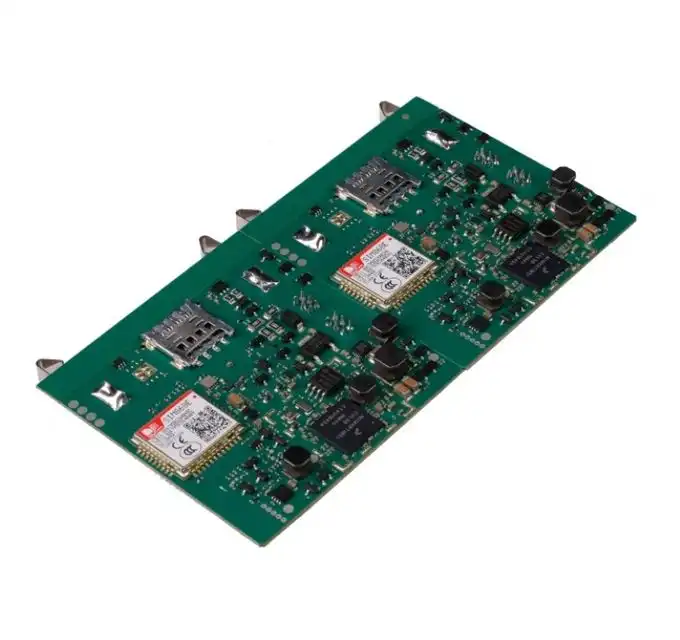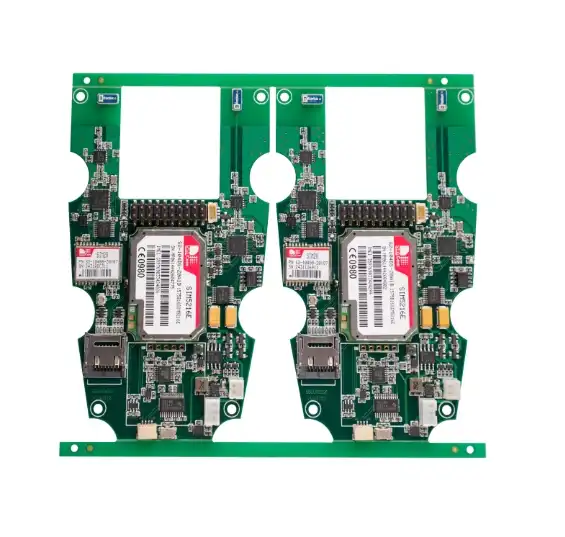Design Optimization and Material Selection for PCB Excellence
The foundation of high-quality PCB board production lies in meticulous design optimization and careful engineering analysis. Engineers must evaluate circuit complexity, signal integrity, power distribution, and layer configuration to achieve reliable performance. By using advanced PCB design software, designers can ensure accurate trace routing, optimal component placement, and balanced impedance control. Simulation tools further help predict thermal behavior and electrical performance, minimizing design flaws before fabrication. This disciplined design approach enhances manufacturability, reduces production errors, and ensures that every PCB delivers consistent quality and long-term operational stability.
Material selection plays a decisive role in the performance, durability, and reliability of PCBs. Each layer, from copper foil to dielectric substrate, must align with the board’s functional requirements. For HDI PCBs, materials with superior thermal stability and low dielectric loss are essential for maintaining signal clarity. In high-frequency or high-speed circuits, specialized laminates reduce interference and transmission loss. Meanwhile, automotive and industrial PCBs rely on heat-resistant, vibration-tolerant materials to ensure consistent operation in demanding environments. Thoughtful material selection enhances both longevity and electrical precision across diverse applications.
Advanced Design Techniques for Complex PCBs
As PCB architectures grow more intricate, advanced design methodologies become vital for achieving high functionality in compact spaces. Microvia and via-in-pad technologies enable denser component placement and shorter signal paths. Blind and buried vias help reduce board size while maintaining interlayer connectivity. Controlled impedance design and differential pair routing ensure stable signal transmission at high frequencies. Incorporating 3D modeling and simulation tools further refines layer stacking and thermal management. Through these advanced design techniques, manufacturers can deliver next-generation PCBs that meet the exacting standards of modern electronics.
Precision Manufacturing and Assembly Processes
The manufacturing phase is where design specifications are translated into physical PCBs. Precision is paramount in every step of the production process. State-of-the-art PCB fabrication equipment, such as laser drilling machines and high-resolution photoplotter systems, ensures accuracy in creating circuit patterns and vias. Strict adherence to manufacturing tolerances is essential for producing reliable, high-quality PCBs.
Surface mount technology (SMT) has revolutionized PCB board production, allowing for higher component density and improved performance. Advanced pick-and-place machines can accurately position components as small as 0201 packages, while reflow ovens ensure proper solder joint formation. Through-hole assembly, while less common in modern designs, remains crucial for certain components and applications. Hybrid assembly techniques, combining SMT and through-hole methods, offer flexibility in PCB production.
Quality Control in PCB Assembly
Quality control during assembly is critical to ensure the functionality and reliability of PCBs. Automated optical inspection (AOI) systems scan assembled boards for defects such as misaligned components, solder bridges, or missing parts. X-ray inspection is particularly valuable for examining hidden solder joints in ball grid array (BGA) components or dense multi-layer boards. These inspection technologies, combined with manual checks by skilled technicians, help maintain high quality standards in PCB assembly.
Comprehensive Testing and Quality Assurance Measures
Rigorous testing is the final barrier against defective PCBs reaching the market. A multi-tiered testing approach ensures that boards meet both electrical and physical specifications. In-circuit testing (ICT) verifies the electrical integrity of assembled PCBs, checking for shorts, opens, and component values. Functional testing simulates real-world conditions to ensure the PCB performs as intended in its final application.
Environmental stress screening (ESS) subjects PCBs to accelerated life testing, including thermal cycling and vibration tests. This process helps identify potential failures that may occur during the product's lifecycle. For high-reliability applications, such as automotive or aerospace, additional tests like highly accelerated life testing (HALT) may be employed to push PCBs to their limits and beyond.
Continuous Improvement in PCB Manufacturing
The pursuit of quality in PCB board production is an ongoing process. Manufacturers must continually evaluate and improve their processes to stay ahead of evolving industry standards and customer requirements. This involves investing in new technologies, training personnel, and implementing robust quality management systems. By fostering a culture of continuous improvement, PCB manufacturers can consistently deliver high-quality products that meet or exceed customer expectations.
Conclusion
Ensuring high quality in PCB board production requires a holistic approach that encompasses every aspect of the manufacturing process. From initial design to final testing, each step plays a crucial role in producing reliable, high-performance PCBs. By embracing advanced technologies, implementing rigorous quality control measures, and fostering a culture of continuous improvement, PCB manufacturers can consistently deliver superior products. As the demand for complex, high-reliability PCBs continues to grow, partnering with experienced PCB suppliers and manufacturers who prioritize quality becomes increasingly important for OEMs and companies seeking top-tier electronic components.
FAQ
What are the key factors in ensuring high-quality PCB board production?
Key factors include design optimization, material selection, precision manufacturing, advanced assembly techniques, comprehensive testing, and continuous process improvement.
How does automated inspection contribute to PCB quality?
Automated optical inspection (AOI) and X-ray systems detect defects such as misaligned components, solder issues, and hidden faults, significantly enhancing quality control.
What types of testing are essential for high-reliability PCBs?
Essential tests include in-circuit testing, functional testing, environmental stress screening, and for some applications, highly accelerated life testing (HALT).
Expert PCB Manufacturing and Assembly Services | Ring PCB
Ring PCB Technology Co., Limited offers comprehensive PCB and PCBA services, leveraging our vertically integrated supply chain and state-of-the-art facilities. Our expertise spans from rapid prototyping to high-volume production, specializing in complex multilayer and HDI PCBs. With triple quality assurance processes and global certifications, we deliver unparalleled reliability. For customized PCB solutions tailored to your project needs, contact our engineering team at [email protected].
References
1. Smith, J. (2023). "Advanced Techniques in PCB Design and Fabrication." Journal of Electronic Manufacturing, 45(2), 112-128.
2. Johnson, A., & Brown, T. (2022). "Quality Control Methods in Modern PCB Assembly." International Conference on Electronics Manufacturing Technology, 78-92.
3. Lee, S. (2021). "Material Innovations for High-Performance PCBs." Advanced Materials for Electronics, 33(4), 301-315.
4. Chen, H., & Wang, L. (2023). "Automated Inspection Technologies in PCB Manufacturing." IEEE Transactions on Electronics Packaging Manufacturing, 46(3), 225-240.
5. Thompson, R. (2022). "Environmental Testing Protocols for High-Reliability PCBs." Reliability Engineering & System Safety, 218, 108152.






